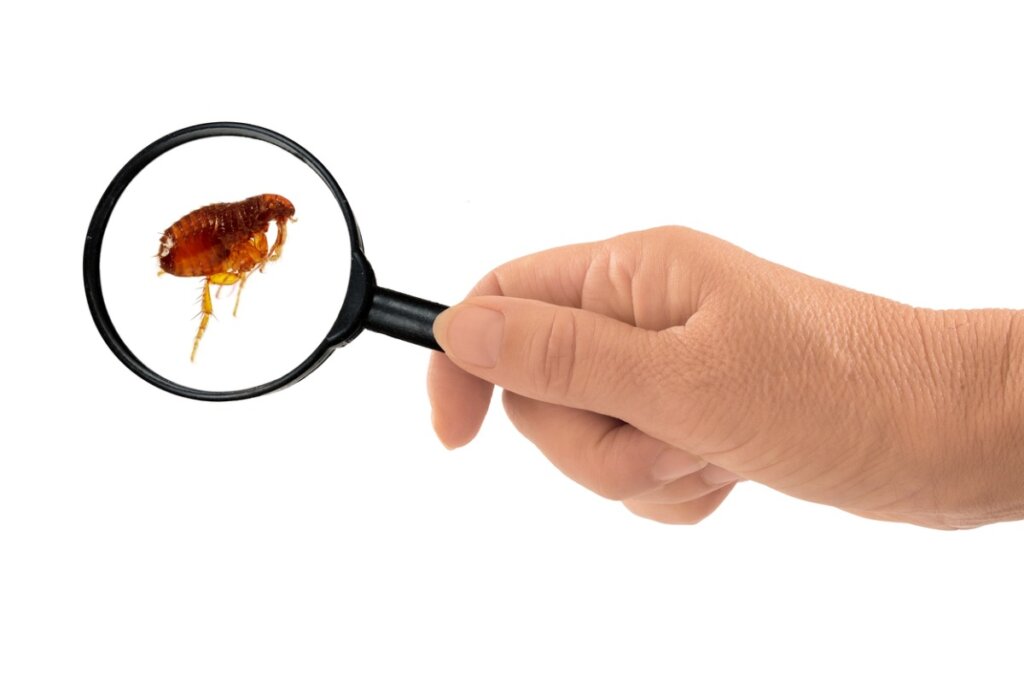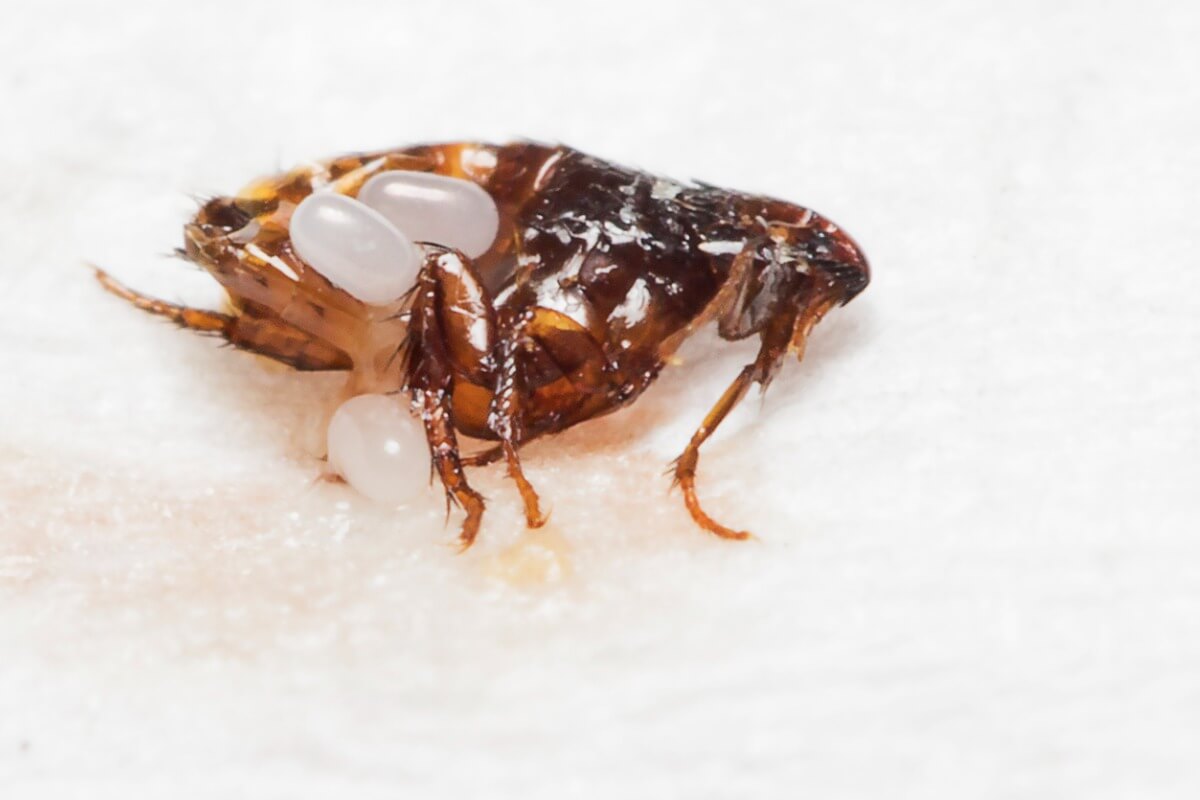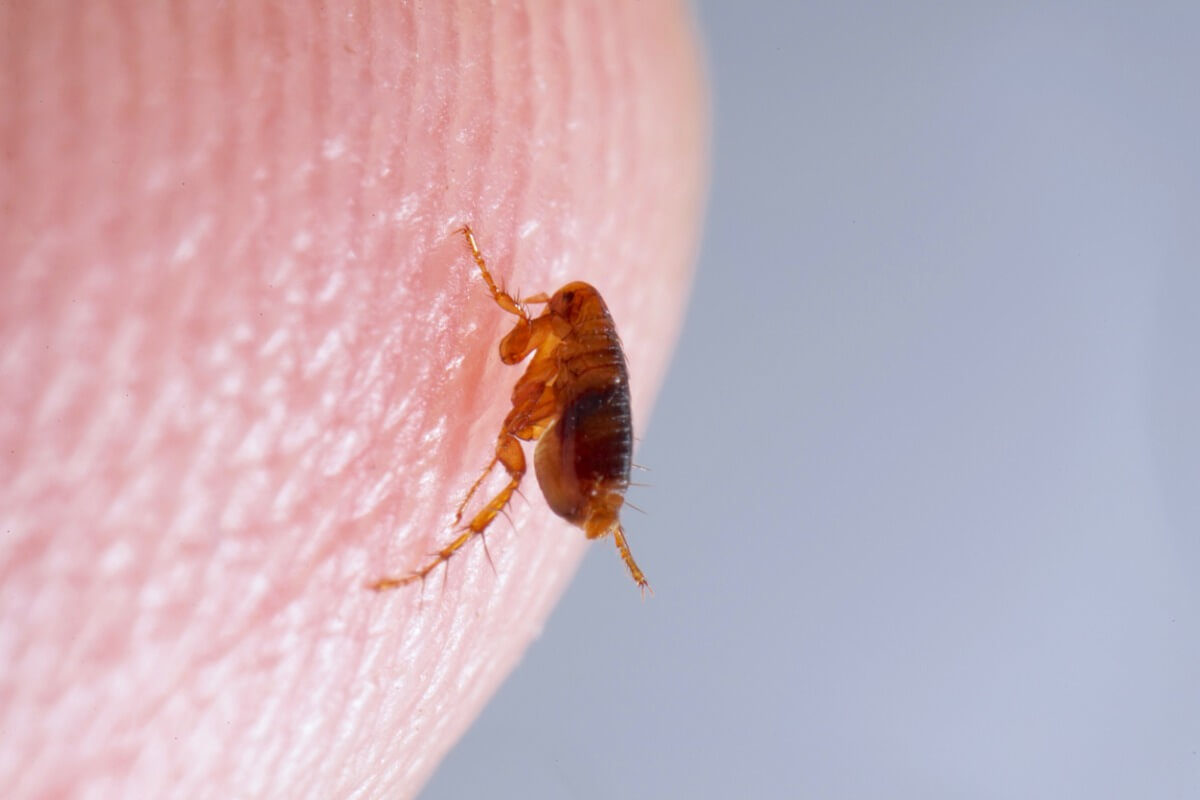How to Get Rid of Fleas in Your Home

You don’t have to live with dogs, cats or other animals that go outdoors to be faced with having to get rid of fleas that have entered your home. All it takes is a few fleas traveling on your shoes or coming in directly from the street to infest an entire home, so you should never let your guard down.
Fleas have a short life cycle, so you’ll soon find yourself with an infestation in your home that will be difficult to control if you don’t discover it in time. In the following paragraphs, you’ll find the most effective way to get rid of them and prevent them from coming back.
Flea life cycle
The first thing you need to know in order to combat this infestation is what a flea is and what their diet is. Although they feed on the blood of dogs and cats, these invertebrates (Ctenocephalides canis and Ctenocephalides felis felis) also bite humans and transmit diseases and other parasites. They’re microscopic insects that belong to the order Siphonaptera.
Fleas need a warm, moist environment to grow and reproduce and, of course, a host. A single flea can live for more than 100 days when feeding off a dog, whereas without food it only survives for about 48 hours. Females lay eggs 2 days after mating and these fall to the ground and other surfaces when the host moves.
After 10 days, the larvae hatch and feed on the dirt of their environment until they create the chrysalis. When they emerge, they have 2 weeks to find a host before they die. Therefore, the adult fleas you see in your home are only a small percentage of the fleas that really exist in the environment, if you count the larvae and pupae.
The flea acts as an intermediate host for the dog tapeworm (Dipylidium caninum), a cestode that infests the digestive tract of these mammals after the fleas bite them.

How do I know if I have fleas in my home?
Fleas are visible without a microscope, but you may still have trouble locating them until there are so many that you almost have an infestation. Other ways to tell if you have a flea infestation at home are listed below:
- Your pet scratches a lot and nibbles its fur: Comb your cat or dog against the grain and you may see a flea. If not, comb it while holding a white paper and pick up the dander and debris that comes out. If you find small black specks that stain the paper red when you wet it, these are flea droppings.
- You have bites: As these parasites usually live in the soil, you’ll be bitten mainly on your feet and lower legs. These insects bite 3 times in each place, so you’ll see the bites grouped in trios.
- Fleas jump: It’s easier to see fleas jumping off your dog’s back or on carpets than it is to find them scurrying around on your dog’s skin.
How to get rid of fleas at home
Once you have detected the infestation, you must act both on the members of the family and in the house itself. The control must be strict and lasting so that the fleas don’t reproduce again. We’ll show you the necessary keys.
Protect animals
The first step is to treat all the animals and people in the house, as they’re the main vehicles for adult fleas and egg-spreading agents. It’s essential to give your pets a bath with a specific antiparasitic shampoo, as well as using a pipette and putting a repellent collar on them.
There are home remedies that are effective in repelling fleas and making them jump off the animal’s body. These are some good options as a complementary method to deworming:
- Brewer’s yeast: The vitamin B1 contained in this food modifies the body odor and taste of the pet’s blood, making it unpleasant for parasites. You can include it in the diet or in the animal’s bath.
- Apple cider vinegar, lemon and rosemary oil: This mixture, along with water, can be sprayed on surfaces, textiles and the pet’s coat.
- Lemon and chamomile: This mixture is also a parasite repellent and can be used topically.
There are several natural formulas that will help get rid of fleas on your dog, but be sure to check everything with your vet beforehand so that you’re using them effectively and without posing a danger to the animal. Remember that keeping deworming up to date is the best way to prevent infestations.
Getting rid of fleas from your home effectively
Getting rid of fleas from animals and people is relatively easy. However, doing it at home is quite another matter. Remember that the eggs fall on surfaces and floors and can stay there for months waiting to hatch when environmental conditions are optimal for their development.
If these parasites have no way to settle on a host, they will either die or leave the area. Therefore, it’s time to clean the house thoroughly to prevent the next generations of fleas from proliferating again. Here are the steps to follow:
- Vacuum all carpets, surfaces and corners: Remember that larvae choose dark, damp spots in the home to breed. Don’t leave a gap unvacuumed.
- After each vacuuming session, take out the bag and throw it in the bin: This way the adults and larvae won’t be able to get out of the vacuum cleaner and infest the house again.
- Wash all textiles in the house at 60°C: Clothes, sheets, curtains and carpets if possible.
- Scrub floors and surfaces with specific products: Bleach is a good option, but if your floor can’t tolerate it, there are specialised soaps that repel parasites and destroy eggs. However, you should find out first about their toxicity to animals and humans.
- Keep up this routine for about 2 weeks: This is the average time it takes for fleas to develop from birth, so you’ll need to do this deep cleaning for a period of at least 12 days. If not, you could have a problem again in the near future.

There are many ways to get rid of fleas at home. However, each case is different and requires specific measures. A small infestation is easy to control with a thorough clean, but a more widespread infestation may require the intervention of professionals. If in doubt, consult your veterinarian and your pest controller.
All cited sources were thoroughly reviewed by our team to ensure their quality, reliability, currency, and validity. The bibliography of this article was considered reliable and of academic or scientific accuracy.
- Boreham R. E., Boreham P.F.L., Dipylidium caninum: life cycle, epizootiology and control, in Cont. Comp. Educ., 12 (5), pagg. 667-676, 1990.
- OLIVEIRA, A. C. D., MACHADO, J. D. A. C., ANTÔNIO, N. S., & NEVES, M. F. (2008). Ctenocephalides canis e Ctenocephalides felis: revisão de literatura. Rev Cient Eletr Med Vet, 11, 1-5.